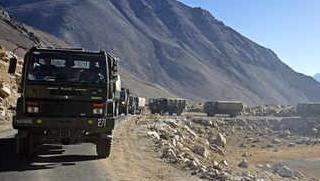MEA Blames China for Hindering ‘Traditional Patrol’ across LAC
By :
Notice: Trying to get property 'fName' of non-object in /home/u589520015/domains/observerdawn.com/public_html/module/Application/view/application/index/news.phtml on line 23
Notice: Trying to get property 'lName' of non-object in /home/u589520015/domains/observerdawn.com/public_html/module/Application/view/application/index/news.phtml on line 23

The
Ministry of External Affairs, Government of India, has said the stopping of
India's normal, traditional patrolling pattern in the Galwan Valley area by
Chinese troops led to a tense situation across the Line of Actual Control. The
entire situation has however caused huge deterioration in bilateral relation
between the two countries.
The MEA spokesperson, Anurag Srivastava
said, “The Chinese authorities had in May early attempted to hinder India's
normal, traditional patrolling pattern near Galwan Valley area”. On May 5,
there was violence at Galwan Valley between Indian and Chinese troops which was
widely reported. Clashes happened in Pangong Lake but the situation was brought
under control. Srivastava said, "The resulting face-off was addressed by
the ground commanders as per the provisions of the bilateral agreements and
protocols. But then China started tension across the Line of Actual Control
(LAC)”.
In mid-May, China sought to change the
status quo in other areas of the western sector. In response, India, in recent
days, has made position clear on the unfolding developments in the region. On
June 20, India had provided the relevant facts and clearly established it has
been the "Chinese actions thus far which have led to increase in tension
in the region and also to the violent face-off of June 15 with
casualties". The MEA has stated that New Delhi had registered protest
against Beijing's actions through both diplomatic and military channels, and
made it clear that "any such change was unacceptable”.
Subsequently, senior commanders from both
sides met on June 6 and agreed on a process for de-escalation and disengagement
along the LAC that involved reciprocal actions. Both sides had agreed to
respect and abide by the LAC and not undertake any activity to alter the status
quo. The Chinese side, however, departed from these understandings in respect
of the LAC in the Galwan Valley area and sought to erect structures just across
the LAC.
When this attempt was foiled, Chinese
troops took violent action on June 15 that directly resulted in casualties,
leaving 20 Indian soldiers dead. Thereafter, both sides remain deployed in
large numbers in the region, while military and diplomatic contacts are
continuing. It was found that since early May, the Chinese side has been
"amassing a large contingent of troops and armaments along the LAC",
Srivastava said, adding that this is not in accordance with the provisions of
various bilateral agreements, especially the key 1993 Agreement on the
Maintenance of Peace and Tranquility along the LAC.
